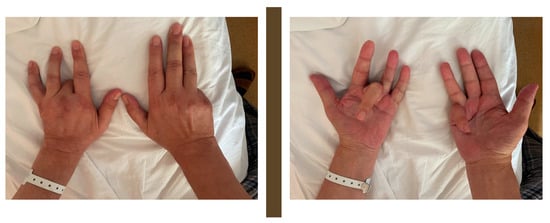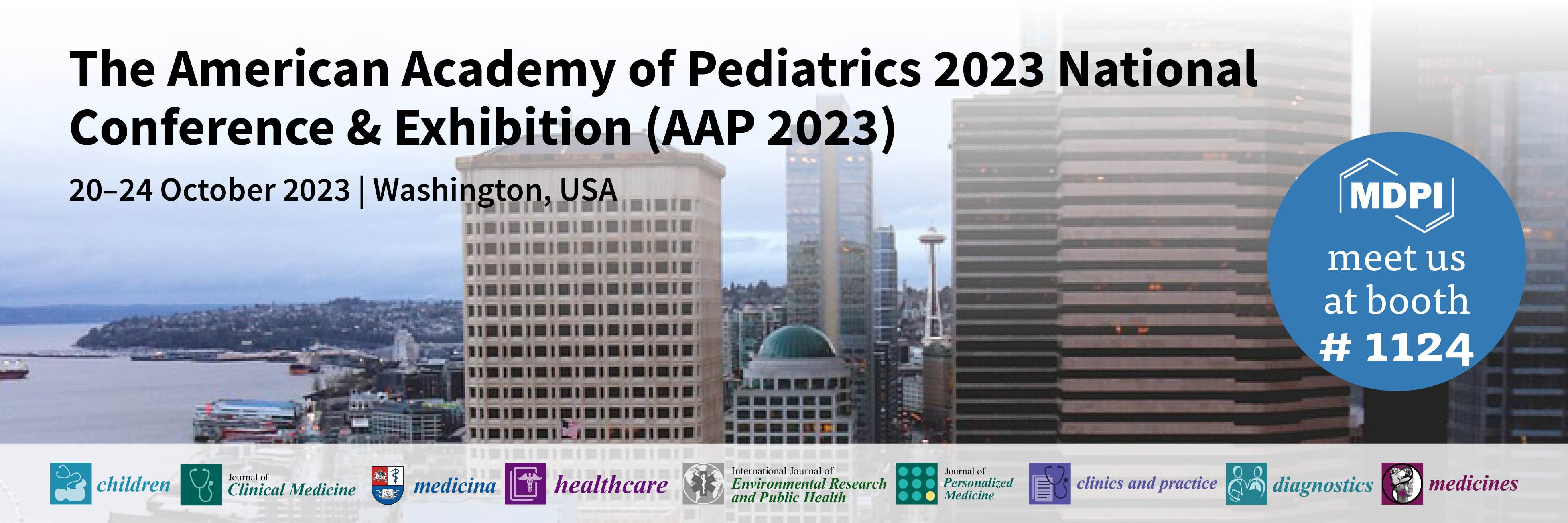-
 A Strategy for Minimizing Circulatory Arrest Duration in Complex Aortic Arch Procedures
A Strategy for Minimizing Circulatory Arrest Duration in Complex Aortic Arch Procedures -
 New Insights into the Fluid Management in Patients with Septic Shock
New Insights into the Fluid Management in Patients with Septic Shock -
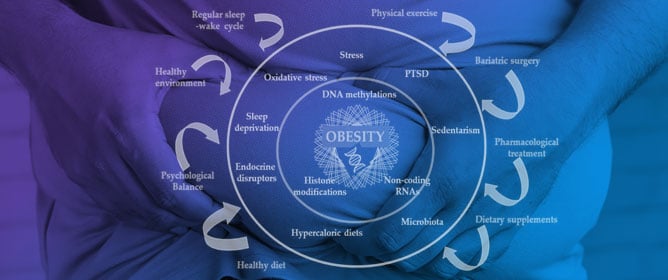 360-Degree Perspectives on Obesity
360-Degree Perspectives on Obesity -
 Why Are Perivascular Spaces Important?
Why Are Perivascular Spaces Important? -
 Myalgic Encephalomyelitis/Chronic Fatigue Syndrome (ME/CFS) and Comorbidities: Linked by Vascular Pathomechanisms and Vasoactive Mediators?
Myalgic Encephalomyelitis/Chronic Fatigue Syndrome (ME/CFS) and Comorbidities: Linked by Vascular Pathomechanisms and Vasoactive Mediators?
Journal Description
Medicina
Medicina
is an international, peer-reviewed, open access journal that covers all problems related to medicine. The journal is owned by the Lithuanian University of Health Sciences (LUHS) and is published monthly online by MDPI. Partner Societies are the Lithuanian Medical Association, Vilnius University, Rīga Stradiņš University, the University of Latvia, and the University of Tartu.
- Open Access— free for readers, with article processing charges (APC) paid by authors or their institutions.
- High Visibility: indexed within Scopus, SCIE (Web of Science), PubMed, MEDLINE, PMC, Embase, and other databases.
- Journal Rank: CiteScore - Q2 (General Medicine)
- Rapid Publication: manuscripts are peer-reviewed and a first decision is provided to authors approximately 23 days after submission; acceptance to publication is undertaken in 2.6 days (median values for papers published in this journal in the first half of 2023).
- Recognition of Reviewers: reviewers who provide timely, thorough peer-review reports receive vouchers entitling them to a discount on the APC of their next publication in any MDPI journal, in appreciation of the work done.
Impact Factor:
2.6 (2022);
5-Year Impact Factor:
2.9 (2022)
Latest Articles
A “Mix and Match” in Hemochromatosis—A Case Report and Literature Focus on the Liver
Medicina 2023, 59(9), 1586; https://doi.org/10.3390/medicina59091586 (registering DOI) - 01 Sep 2023
Abstract
Hemochromatosis is a genetic disorder characterized by increased iron storage in various organs with progressive multisystemic damage. Despite the reports dating back to 1865, the diagnosis of hemochromatosis poses a challenge to clinicians due to its non-specific symptoms and indolent course causing significant
[...] Read more.
Hemochromatosis is a genetic disorder characterized by increased iron storage in various organs with progressive multisystemic damage. Despite the reports dating back to 1865, the diagnosis of hemochromatosis poses a challenge to clinicians due to its non-specific symptoms and indolent course causing significant delay in disease recognition. The key organ that is affected by iron overload is the liver, suffering from fibrosis, cirrhosis or hepatocellular carcinoma, complications that can be prevented via early diagnosis and treatment. This review aims to draw attention to the pitfalls in diagnosing hemochromatosis. We present a case with multiorgan complaints, abnormal iron markers and a consistent genetic result. We then examine the relevant literature and discuss hemochromatosis subtypes and liver involvement, including transplant outcome and treatment options. In summary, hemochromatosis remains difficult to diagnose due to its symptom heterogeneity and rarity; thus, further education for practitioners of all disciplines is useful in facilitating its early recognition and management.
Full article
(This article belongs to the Special Issue Chronic Liver Diseases in Liver Surgery and Anesthesia)
►
Show Figures
Open AccessArticle
Indirect and Direct 65+ Patient Reporting of Non-Steroidal Anti-Inflammatory Drug-Induced Adverse Drug Reactions as a Source of Information on Polypharmacy and Polypharmacy-Related Risk
by
, , , and
Medicina 2023, 59(9), 1585; https://doi.org/10.3390/medicina59091585 - 31 Aug 2023
Abstract
►▼
Show Figures
Background and Objectives: Non-steroidal anti-inflammatory drugs (NSAIDs), which have anti-inflammatory and analgesic properties, are commonly used in the treatment of various, particularly frequent, as well as chronic, conditions in older patients. Due to common polypragmasia in these patients and a high risk
[...] Read more.
Background and Objectives: Non-steroidal anti-inflammatory drugs (NSAIDs), which have anti-inflammatory and analgesic properties, are commonly used in the treatment of various, particularly frequent, as well as chronic, conditions in older patients. Due to common polypragmasia in these patients and a high risk of adverse drug reactions (ADRs) and drug interactions, pain management poses a therapeutic challenge. This study describes the importance of ADR reports in the identification of polypharmacy and the ensuing interactions. Materials and Methods: Both healthcare professionals (HPs) and non-healthcare professionals (non-HPs) reports collected in the EudraVigilance database of NSAIDs, including most commonly co-reported medications and reported reactions, were analysed and differences between HPs and non-HPs reports were identified. Results: In the analysed period and group, non-HPs reported more reactions but indicated fewer drugs as suspect or concomitant. The outcomes of our analysis indicate more HP engagement and more detailed reports of serious ADRs when compared to non-serious individual case safety reports (ICSRs) by non-HPs, which appeared more detailed. Such reactions as kidney failure and increased risk of bleeding are known adverse reactions to NSAIDs and common symptoms of their interactions, which were described in the available literature. They were much more frequently reported by HPs than by non-HPs. Non-HPs more frequently reported reactions that may have been considered less significant by HPs. Conclusions: The differences between healthcare professionals’ (HPs) and non-healthcare professionals’ (non-HPs) reports may result from the fact that the reports from patients and their caregivers require a professional medical diagnosis based on symptoms described by the patient or additional diagnostic tests. This means that when appropriately classified, medically verified, and statistically analysed, the data may provide new evidence for the risks of medication use or drug interactions.
Full article
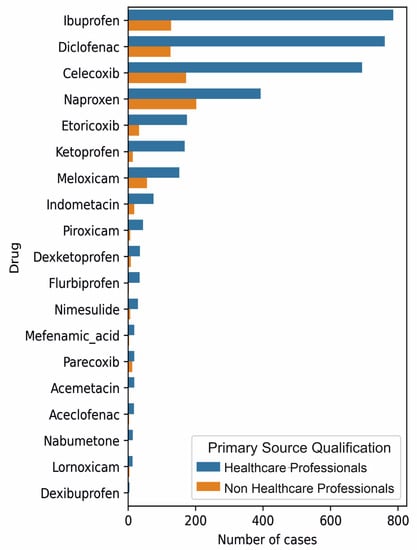
Figure 1
Open AccessReview
A Spectrum of Solutions: Unveiling Non-Pharmacological Approaches to Manage Autism Spectrum Disorder
by
, , , , , and
Medicina 2023, 59(9), 1584; https://doi.org/10.3390/medicina59091584 - 31 Aug 2023
Abstract
Autism spectrum disorder (ASD) is a developmental disorder that causes difficulty while socializing and communicating and the performance of stereotyped behavior. ASD is thought to have a variety of causes when accompanied by genetic disorders and environmental variables together, resulting in abnormalities in
[...] Read more.
Autism spectrum disorder (ASD) is a developmental disorder that causes difficulty while socializing and communicating and the performance of stereotyped behavior. ASD is thought to have a variety of causes when accompanied by genetic disorders and environmental variables together, resulting in abnormalities in the brain. A steep rise in ASD has been seen regardless of the numerous behavioral and pharmaceutical therapeutic techniques. Therefore, using complementary and alternative therapies to treat autism could be very significant. Thus, this review is completely focused on non-pharmacological therapeutic interventions which include different diets, supplements, antioxidants, hormones, vitamins and minerals to manage ASD. Additionally, we also focus on complementary and alternative medicine (CAM) therapies, herbal remedies, camel milk and cannabiodiol. Additionally, we concentrate on how palatable phytonutrients provide a fresh glimmer of hope in this situation. Moreover, in addition to phytochemicals/nutraceuticals, it also focuses on various microbiomes, i.e., gut, oral, and vaginal. Therefore, the current comprehensive review opens a new avenue for managing autistic patients through non-pharmacological intervention.
Full article
(This article belongs to the Special Issue Atypical Autism: Causes, Diagnosis, and Support)
►▼
Show Figures
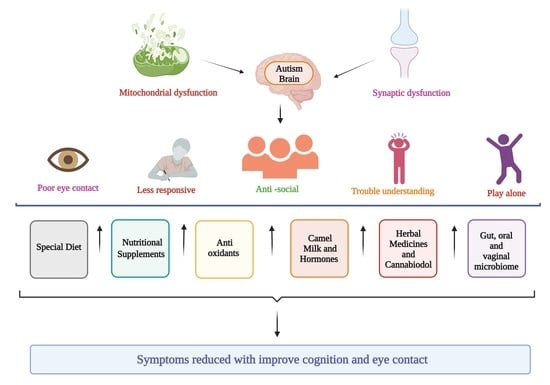
Graphical abstract
Open AccessArticle
The Relationship between Post-COVID Syndrome and the Burden of Comorbidities Assessed Using the Charlson Comorbidity Index
Medicina 2023, 59(9), 1583; https://doi.org/10.3390/medicina59091583 - 31 Aug 2023
Abstract
Introduction: The post-COVID-19 syndrome is a clinical entity characterized by the manifestation of signs and symptoms that develop after the acute phase of COVID-19, which persist for a duration of more than 12 weeks and are not explained by any alternative diagnosis. It
[...] Read more.
Introduction: The post-COVID-19 syndrome is a clinical entity characterized by the manifestation of signs and symptoms that develop after the acute phase of COVID-19, which persist for a duration of more than 12 weeks and are not explained by any alternative diagnosis. It has been observed that individuals with pre-existing chronic diseases, including cardiovascular and pulmonary diseases, are at a greater risk of developing post-COVID-19 syndrome. The Charlson Comorbidity Index (CCI) is a useful tool employed to evaluate the burden of comorbidities and predict the prognosis of patients with post-COVID-19 syndrome. The present study aims to assess whether the burden of comorbidities, evaluated using the CCI, correlates with post-COVID-19 syndrome. Materials and Methods: Between 21 April 2020 and 15 May 2023, we enrolled all consecutive outpatients with previous COVID-19 admissions to a post-acute day-hospital service three months after a negative SARS-CoV-2 molecular test. We assessed age, sex, BMI, acute COVID-19 and post-COVID-19 signs, and symptoms and calculated CCI according to its current definition. Post-COVID-19 syndrome was defined as the persistence of at least one sign or symptom lasting more than 12 weeks after COVID-19 resolution and not explained by an alternative diagnosis. The relationship between post-COVID-19 and CCI was explored first with the chi-squared test, then with different binary logistic regression models. We considered significant values of p lower than 0.05. Results: We obtained a cohort of 3636 patients and observed a significant association between the number of post-COVID-19 symptoms and CCI. Patients developing post-COVID-19 were more commonly affected by a greater burden of comorbidities. Patients with at least one CCI point had an increased risk of post-COVID-19 syndrome (OR:2.961; 95%CI: 2.269–3.863; p < 0.0001), which increased further for CCI ≥ 4 (OR:6.062; 95%CI: 3.163–11.618; p < 0.0001). Conclusions: Patients affected by post-COVID-19 show a greater clinical complexity and a larger burden of comorbidities, synthesized by a higher CCI; moreover, a higher CCI seems to correlate with an increasing post-COVID-19 risk, being the presence of ≥1 or ≥4 CCI points associated with a 3-fold and 6-fold increased risk of post-COVID-19 syndrome, respectively.
Full article
(This article belongs to the Section Infectious Disease)
►▼
Show Figures
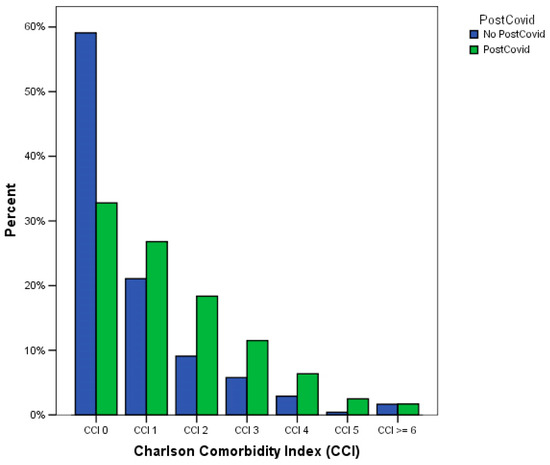
Figure 1
Open AccessArticle
Trends of Surgical Service Utilization for Lumbar Spinal Stenosis in South Korea: A 10-Year (2010–2019) Cross-Sectional Analysis of the Health Insurance Review and Assessment Service—National Patient Sample Data
Medicina 2023, 59(9), 1582; https://doi.org/10.3390/medicina59091582 - 31 Aug 2023
Abstract
►▼
Show Figures
Background and Objectives: This retrospective, cross-sectional, and descriptive study used claims data from the Korean Health Insurance Review and Assessment Service (HIRA) between 2010 and 2019 to analyze the trend of surgical service utilization in patients with lumbar spinal stenosis (LSS). Materials
[...] Read more.
Background and Objectives: This retrospective, cross-sectional, and descriptive study used claims data from the Korean Health Insurance Review and Assessment Service (HIRA) between 2010 and 2019 to analyze the trend of surgical service utilization in patients with lumbar spinal stenosis (LSS). Materials and Methods: The national patient sample data provided by the HIRA, which consisted of a 2% sample of the entire Korean population, was used to assess all patients who underwent decompression or fusion surgery at least once in Korea, with LSS as the main diagnosis from January 2010 to December 2019. An in-depth analysis was conducted to examine the utilization of surgical services, taking into account various demographic characteristics of patients, the frequency of claims for different types of surgeries, reoperation rates, the specific types of inpatient care associated with each surgery type, prescribed medications, and the overall expense of healthcare services. Results: A total of 6194 claims and 6074 patients were analyzed. The number of HIRA claims for patients increased from 393 (2010) to 417 (2019) for decompression, and from 230 (2010) to 244 (2019) for fusion. As for the medical expenses of surgery, there was an increase from United States dollar (USD) 867,549.31 (2010) to USD 1,153,078.94 (2019) for decompression and from USD 1,330,440.37 (2010) to USD 1,780,026.48 (2019) for fusion. Decompression accounted for the highest proportion (65.8%) of the first surgeries, but more patients underwent fusion (50.6%) than decompression (49.4%) in the second surgery. Across all sex and age groups, patients who underwent fusion procedures experienced longer hospital stays and incurred higher medical expenses for their inpatient care. Conclusion: The surgical service utilization of patients with LSS and the prescribing rate of opioids and non-opioid analgesics for surgical patients increased in 2019 compared to 2010. From mid-2010 onward, claims for fusion showed a gradual decrease, whereas those for decompression showed a continuously increasing trend. The findings of this study are expected to provide basic research data for clinicians, researchers, and policymakers.
Full article

Figure 1
Open AccessEditorial
Rheumatic Diseases: New Progress in Clinical Research and Pathogenesis
by
and
Medicina 2023, 59(9), 1581; https://doi.org/10.3390/medicina59091581 - 31 Aug 2023
Abstract
Rheumatic diseases encompass a group of disorders that primarily target the musculoskeletal system, including joints, bones, muscles, and connective tissue [...]
Full article
(This article belongs to the Special Issue Rheumatic Diseases: New Progress in Clinical Research and Pathogenesis)
Open AccessArticle
A Multidisciplinary Approach to Swallowing Rehabilitation in Patients with Forward Head Posture
Medicina 2023, 59(9), 1580; https://doi.org/10.3390/medicina59091580 - 31 Aug 2023
Abstract
(1) Background and Objectives: The forward head posture (FHP) is characterized by increased extensions of upper cervical vertebrae and flexion of the lower cervical vertebrae and upper thoracic regions, associated with muscle shortening. The compressive loading on the tissues in the cervical
[...] Read more.
(1) Background and Objectives: The forward head posture (FHP) is characterized by increased extensions of upper cervical vertebrae and flexion of the lower cervical vertebrae and upper thoracic regions, associated with muscle shortening. The compressive loading on the tissues in the cervical spine negatively impacts suprahyoid and infrahyoid muscles and generates increased tension of the masticatory muscles. The tongue has relations with the suprahyoid and the infrahyoid muscles. The pattern of swallowing evolves gradually from birth to the age of four. If this developmental transition does not occur, the result is persistent infantile or atypical swallowing—an orofacial myofunctional disorder with the tongue in improper position during swallowing, causing strain and stress on the jaw, face, head and neck. In FHP, muscles crucial to swallowing are biomechanically misaligned. The lengthening of the suprahyoid muscles necessitates stronger contractions to achieve proper hyolaryngeal movement during swallowing. This study assesses the added benefits of physiotherapy to the traditional myofunctional swallowing rehabilitation for patients with FHP. The underlying hypothesis is that without addressing FHP, swallowing rehabilitation remains challenged and potentially incomplete. (2) Materials and Methods: A total of 61 participants (12–26 years) meeting the inclusion criteria (FHP and atypical swallowing) were divided into two similar groups. Group A attended one orofacial myofunctional therapy (OMT) and one physiotherapy session per week, group B only one OMT session per week, for 20 weeks. Exclusion criteria were as follows: ankyloglossia, neurological impairment affecting tongue and swallowing, cervical osteoarticular pathology, other previous or ongoing treatments for FHP and atypical swallowing. (3) Results: There is a significant improvement in terms of movement and use of the orofacial structures (tongue, lips, cheeks), as well as in breathing and swallowing in both groups. Group A achieved better outcomes as the CVA angle was directly addressed by manual therapy and GPR techniques. (4) Conclusions: The combined therapy proved to be more effective than single OMT therapy.
Full article
(This article belongs to the Section Translational Medicine)
►▼
Show Figures
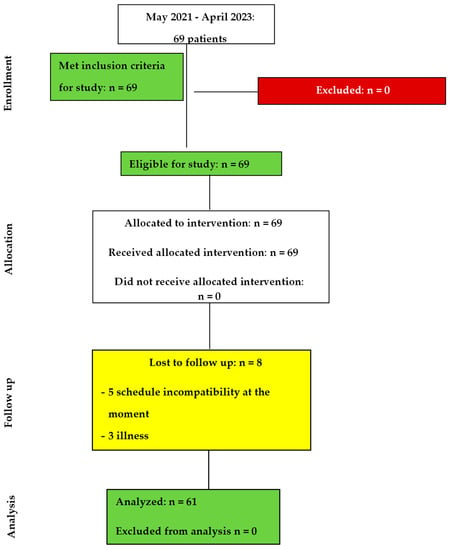
Figure 1
Open AccessArticle
Assessing Continuous Epidural Infusion and Programmed Intermittent Epidural Bolus for Their Effectiveness in Providing Labor Analgesia: A Mono-Centric Retrospective Comparative Study
by
, , , , , and
Medicina 2023, 59(9), 1579; https://doi.org/10.3390/medicina59091579 - 30 Aug 2023
Abstract
Background and Objectives: Local anesthetics administered via epidural catheters have evolved from intermittent top-ups to simultaneous administration of continuous epidural infusion (CEI) and patient-controlled epidural analgesia (PCEA) using the same device. The latest programmed intermittent epidural bolus (PIEB) model is believed to
[...] Read more.
Background and Objectives: Local anesthetics administered via epidural catheters have evolved from intermittent top-ups to simultaneous administration of continuous epidural infusion (CEI) and patient-controlled epidural analgesia (PCEA) using the same device. The latest programmed intermittent epidural bolus (PIEB) model is believed to create a wider and more even distribution of analgesia inside the epidural space. The switch from CEI + PCEA to PIEB + PCEA in our department began in 2018; however, we received conflicting feedback regarding workload from the quality assurance team. This study aimed to investigate the benefits and drawbacks of this conversion, including the differences in acute pain service (APS) staff workload, maternal satisfaction, side effects, and complications before and after the changeover. Materials and Methods: Items from the APS records included total delivery time, average local anesthetic dosage, and the formerly mentioned items. The incidence of side effects, the association between the duration of delivery and total dosage, and hourly medication usage in the time subgroups of the CEI and PIEB groups were compared. The staff workload incurred from rescue bolus injection, catheter adjustment, and dosage adjustment was also analyzed. Results: The final analysis included 214 and 272 cases of CEI + PCEA and PIEB + PCEA for labor analgesia, respectively. The total amount of medication and average hourly dosage were significantly lower in the PIEB + PCEA group. The incidences of dosage change, manual bolus, extra visits per patient, and lidocaine use for rescue bolus were greater in the PIEB + PCEA group, indicating an increased staff workload. However, the two groups did not differ in CS rates, labor time, maternal satisfaction, and side effects. Conclusions: This study revealed that while PIEB + PCEA maintained the advantage of decreasing total drug doses, it inadvertently increased the staff burden. Increased workload might be a consideration in clinical settings when choosing between different methods of PCEA.
Full article
(This article belongs to the Special Issue Perioperative Pain Management)
►▼
Show Figures
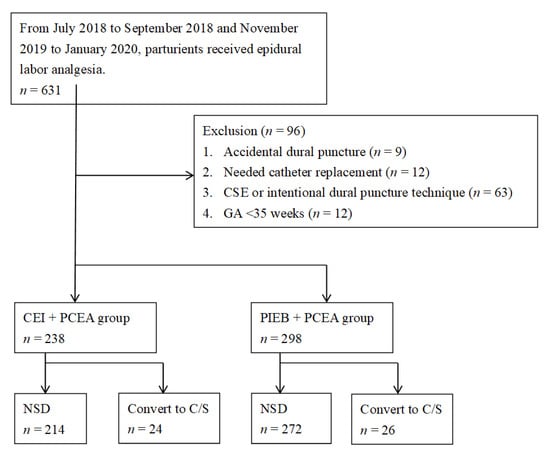
Figure 1
Open AccessArticle
Investigating Bioaccessibility of Advanced Glycation Product Precursors in Gluten-Free Foods Using In Vitro Gastrointestinal System
Medicina 2023, 59(9), 1578; https://doi.org/10.3390/medicina59091578 - 30 Aug 2023
Abstract
Background and Objectives: Gluten-free products have been produced as part of medical therapy and have gained popularity among individuals seeking weight loss or healthier dietary options. Assessing the potential risks associated with these products is essential in optimizing their compositions and developing new
[...] Read more.
Background and Objectives: Gluten-free products have been produced as part of medical therapy and have gained popularity among individuals seeking weight loss or healthier dietary options. Assessing the potential risks associated with these products is essential in optimizing their compositions and developing new dietetic approaches. This study aimed to determine the glyoxal (GO) and methylglyoxal (MGO) contents in gluten-free bread, biscuits, and cookies and to examine their bioaccessibility using an in vitro gastrointestinal model. Materials and Methods: A total of 26 gluten-free and 19 gluten-containing (control) products were analyzed for their GO and MGO levels utilizing a high-performance liquid chromatography (HPLC) device. Results: Post-digestion, the GO and MGO values increased significantly across all food groups compared with pre-digestion values (p < 0.05), and the bioaccessibility exceeded 100%. Specifically, gluten-free bread exhibited higher post-digestion GO and MGO values than the control group (p < 0.05). Conversely, gluten-containing biscuits and cookies had higher post-digestion GO and MGO values compared to gluten-free products (p < 0.05). Conclusions: The detection of precursors to advanced glycation end products (AGEs) in gluten-free products has drawn attention to the potential health risks associated with their consumption. Therefore, reevaluation of the formulations and technologies used in these products and the introduction of new strategies are crucial in mitigating AGE content.
Full article
(This article belongs to the Special Issue Importance and Consequences of Nutrition and Diet Plans for the Management of Gastrointestinal Disorders)
►▼
Show Figures

Figure 1
Open AccessArticle
Genotype Distribution and Characteristics of Chronic Hepatitis C Infection in Estonia, Latvia, Lithuania, and Ukraine: The RESPOND-C Study
by
, , , , , , , , , , , , , and
Medicina 2023, 59(9), 1577; https://doi.org/10.3390/medicina59091577 - 30 Aug 2023
Abstract
Background and objectives: Since 2013, highly effective direct-acting antiviral (DAA) treatment for chronic hepatitis C (CHC) has become available, with cure rates exceeding 95%. For the choice of optimal CHC treatment, an assessment of the hepatitis C virus (HCV) genotype (GT) and liver
[...] Read more.
Background and objectives: Since 2013, highly effective direct-acting antiviral (DAA) treatment for chronic hepatitis C (CHC) has become available, with cure rates exceeding 95%. For the choice of optimal CHC treatment, an assessment of the hepatitis C virus (HCV) genotype (GT) and liver fibrosis stage is necessary. Information about the distribution of these parameters among CHC patients in Estonia, Latvia, and Lithuania (the Baltic states) and especially in Ukraine is scarce. This study was performed to obtain epidemiologic data regarding CHC GT and fibrosis stage distribution for better planning of resources and prioritization of patients for DAA drug treatment according to disease severity in high-income (the Baltic states) and lower-middle-income (Ukraine) countries. Materials and methods: The retrospective RESPOND-C study included 1451 CHC patients. Demographic and disease information was collected from medical charts for each patient. Results: The most common suspected mode of viral transmission was blood transfusions (17.8%), followed by intravenous substance use (15.7%); however, in 50.9% of patients, the exact mode of transmission was not clarified. In Ukraine (18.4%) and Estonia (26%), transmission by intravenous substance use was higher than in Lithuania (5%) and Latvia (5.3%). Distribution of HCV GT among patients with CHC was as follows: GT1—66.4%; GT3—28.1; and GT2—4.1%. The prevalence of GT1 was the highest in Latvia (84%) and the lowest in Ukraine (63%, p < 0.001). Liver fibrosis stages were distributed as follows: F0—12.2%, F1—26.3%, F2—23.5%, F3—17.1%, and F4—20.9%. Cirrhosis (F4) was more prevalent in Lithuanian patients (30.1%) than in Estonians (8.1%, p < 0.001). Conclusions: This study contributes to the knowledge of epidemiologic characteristics of HCV infection in the Baltic states and Ukraine. The data regarding the patterns of HCV GT and fibrosis stage distribution will be helpful for the development of national strategies to control HCV infection in the era of DAA therapy.
Full article
(This article belongs to the Section Gastroenterology & Hepatology)
Open AccessSystematic Review
Prognostic Tools for Older Women with Breast Cancer: A Systematic Review
by
, , , , and
Medicina 2023, 59(9), 1576; https://doi.org/10.3390/medicina59091576 - 30 Aug 2023
Abstract
Background: Breast cancer is the most common cancer in women, and older patients comprise an increasing proportion of patients with this disease. The older breast cancer population is heterogenous with unique factors affecting clinical decision making. While many models have been developed
[...] Read more.
Background: Breast cancer is the most common cancer in women, and older patients comprise an increasing proportion of patients with this disease. The older breast cancer population is heterogenous with unique factors affecting clinical decision making. While many models have been developed and tested for breast cancer patients of all ages, tools specifically developed for older patients with breast cancer have not been recently reviewed. We systematically reviewed prognostic models developed and/or validated for older patients with breast cancer. Methods: We conducted a systematic search in 3 electronic databases. We identified original studies that were published prior to 8 November 2022 and presented the development and/or validation of models based mainly on clinico-pathological factors to predict response to treatment, recurrence, and/or mortality in older patients with breast cancer. The PROBAST was used to assess the ROB and applicability of each included tool. Results: We screened titles and abstracts of 7316 records. This generated 126 studies for a full text review. We identified 17 eligible articles, all of which presented tool development. The models were developed between 1996 and 2022, mostly using national registry data. The prognostic models were mainly developed in the United States (n = 7; 41%). For the derivation cohorts, the median sample size was 213 (interquartile range, 81–845). For the 17 included modes, the median number of predictive factors was 7 (4.5–10). Conclusions: There have been several studies focused on developing prognostic tools specifically for older patients with breast cancer, and the predictions made by these tools vary widely to include response to treatment, recurrence, and mortality. While external validation was rare, we found that it was typically concordant with interval validation results. Studies that were not validated or only internally validated still require external validation. However, most of the models presented in this review represent promising tools for clinical application in the care of older patients with breast cancer.
Full article
(This article belongs to the Collection Frontiers in Breast Cancer Diagnosis and Treatment)
►▼
Show Figures
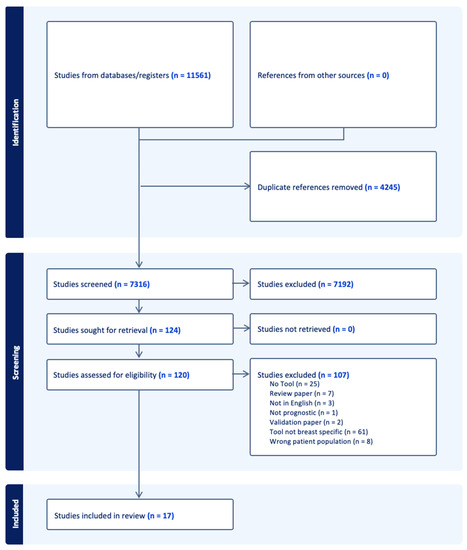
Figure 1
Open AccessArticle
The COVID-19 Pandemic and Elective Spine Surgery—A Single Center Experience
by
, , , , , , , , and
Medicina 2023, 59(9), 1575; https://doi.org/10.3390/medicina59091575 - 30 Aug 2023
Abstract
Background and objective: The COVID-19 pandemic had a profound impact on medical practice worldwide. In this study, we aimed to investigate the trends of elective spine surgery in our department before and during the pandemic. Materials and methods: Total number of
[...] Read more.
Background and objective: The COVID-19 pandemic had a profound impact on medical practice worldwide. In this study, we aimed to investigate the trends of elective spine surgery in our department before and during the pandemic. Materials and methods: Total number of spine procedures due to disc herniation (DH) or spinal stenosis (SS) was collected during 2019–2021 in the Department of Neurosurgery, University Hospital Center Osijek, Croatia. In order to elucidate potential risk factors in the post-pandemic period, demographic data were collected for patients who underwent surgery during 2021. Results: In 2020, there was a 22.1% decrease in the number of surgeries compared to 2019 (205 vs. 263), but during 2021 we observed an increase of 36.1% compared to 2020 (279 vs. 205). The mean age of patients in 2021 was 53.14 years (53.14 ± 13.05) with body mass index of 28.31 kg/m2 (28.31 ± 4.89). There were 179 overweight patients (74%) and 103 smokers (42.6%). Although male and female patients were equally represented (121 each), there was a significant interaction of weight class and sex (p = 0.013). Patients younger than 65 were more likely to undergo surgery due to DH (p < 0.001), whereas older patients were more likely to suffer from SS (p < 0.001). Conclusions: The volume of elective spine surgeries decreased in the first year of the pandemic and increased the following year. Our results suggest that public health policies in the early pandemic period reduced elective surgical procedures, which was followed by a compensatory increase in the following period.
Full article
(This article belongs to the Special Issue Clinical Management of Spinal Diseases and Traumatology)
►▼
Show Figures
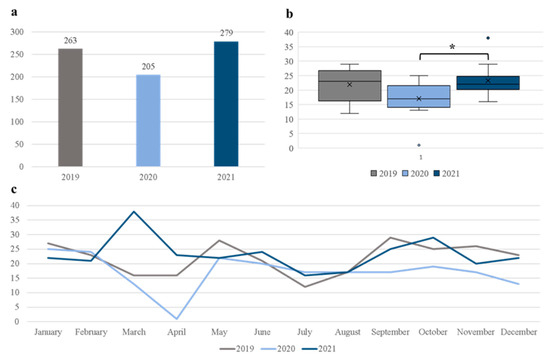
Figure 1
Open AccessReview
Presentation, Molecular Characteristics, Treatment, and Outcomes of Colorectal Cancer in Patients Older than 80 Years Old
Medicina 2023, 59(9), 1574; https://doi.org/10.3390/medicina59091574 - 29 Aug 2023
Abstract
Background: An increasing proportion of the population of patients with cancer presents at an advanced age, increasing the challenges of successful and well-tolerated treatments. In the older spectrum of the geriatric cancer patients, those older than 80 years old, challenges are even
[...] Read more.
Background: An increasing proportion of the population of patients with cancer presents at an advanced age, increasing the challenges of successful and well-tolerated treatments. In the older spectrum of the geriatric cancer patients, those older than 80 years old, challenges are even higher because of increasing comorbidities and decreasing organ function reserves. Methods: Studies regarding colorectal cancer presentation, treatment, and prognosis in patients older than 80 years old available in the literature were evaluated and were compiled within a narrative review. Molecular attributes of colorectal cancer in the subset of patients older than 80 years old in published genomic cohorts were also reviewed and were compared with similar attributes in younger patients. Results: Characteristics of colorectal cancer in octogenarians are in many aspects similar to younger patients, but patients older than 80 years old present more often with right colon cancers. Surgical treatment of colorectal cancer in selected patients over 80 years old is feasible and should be pursued. Adjuvant chemotherapy is under-utilized in this population. Although combination chemotherapy is in most cases not advisable, monotherapy with fluoropyrimidine derivatives is feasible and efficacious. Conclusions: Outcomes of colorectal cancer patients over the age of 80 years old may be optimized with a combination of standard treatments adjusted to the individual patient’s functional status and organ reserves. Increased support for the older age group during their colorectal cancer treatment modalities would improve oncologic outcomes with decreasing adverse outcomes of therapies.
Full article
(This article belongs to the Section Gastroenterology & Hepatology)
►▼
Show Figures
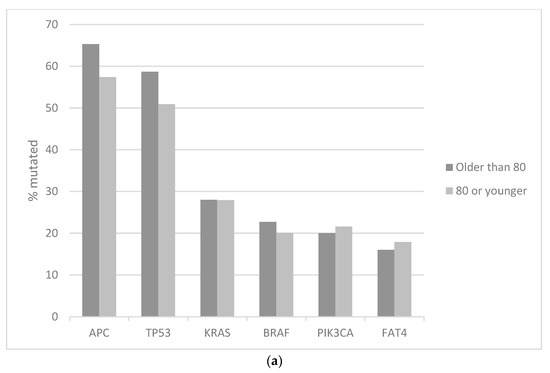
Figure 1
Open AccessCase Report
A Case Report of Pseudotumor Cerebri Syndrome with a Huge Retroperitoneal Cyst
Medicina 2023, 59(9), 1573; https://doi.org/10.3390/medicina59091573 - 29 Aug 2023
Abstract
Background: Aside from primary pseudotumor cerebri syndrome (PTCS) with an unknown etiology (i.e., idiopathic intracranial hypertension), which typically occurs in association with obesity, several conditions including cerebral venous abnormalities, drug use, and hormonal imbalance may be a secondary cause of PTCS. However,
[...] Read more.
Background: Aside from primary pseudotumor cerebri syndrome (PTCS) with an unknown etiology (i.e., idiopathic intracranial hypertension), which typically occurs in association with obesity, several conditions including cerebral venous abnormalities, drug use, and hormonal imbalance may be a secondary cause of PTCS. However, a focal space-occupying lesion outside of the brain as a cause of PTCS has rarely been reported. Case Presentation: A previously healthy 34-year-old man presented with blurred vision for three weeks. The patient had a three-month preceding history of worsening headache. On admission, he was hypertensive (160/90 mmHg) and underweight with a body mass index of 18.4 kg/m2. Fundus examination documented papilledema in both eyes. Neurological examination was unremarkable except for mild nuchal rigidity, and results of routine serologic testing were normal. Gadolinium-enhanced brain magnetic resonance imaging revealed bilateral posterior scleral flattening, suggesting intracranial hypertension. There was no other abnormal brain parenchymal lesion or meningeal enhancement. Cerebrospinal fluid (CSF) assay showed a markedly increased opening pressure (30.0 cmH2O) with normal CSF composition. A tentative diagnosis of PTCS was made based on ophthalmological, neuroradiological, and laboratory findings. During differential diagnosis, abdomen computed tomography demonstrated a huge benign cystic lesion (14.7 × 10.6 × 16.4 cm) in the right retroperitoneal space, which originated from the mesentery and resulted in hydronephrosis and renovascular hypertension due to external compression of the right kidney. Other evaluations were unremarkable. After successful surgical removal of the cyst, clinical symptoms such as headache, blurred vision, and papilledema on fundus examination were markedly improved, and blood pressure was normalized during the three-month follow-up period. Conclusions: A large retroperitoneal cyst that can increase intra-abdominal pressure could be a rare cause of PTCS. Therefore, meticulous evaluation is warranted for patients with PTCS, especially those without known risk factors.
Full article
(This article belongs to the Section Neurology)
►▼
Show Figures
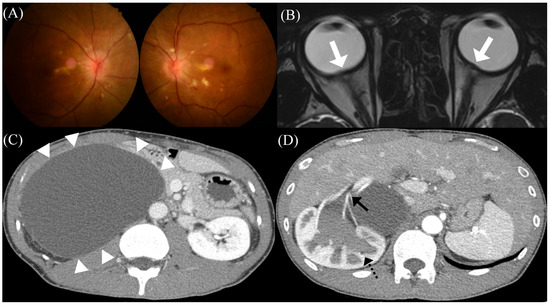
Figure 1
Open AccessReview
Suggestion of a Novel Classification Based on the Anatomical Region and Type of Bilateral Fatigue Femoral Fractures
by
, , , , , , and
Medicina 2023, 59(9), 1572; https://doi.org/10.3390/medicina59091572 - 29 Aug 2023
Abstract
Purpose: Bilateral fatigue femoral fractures (BFFF) represent an extremely rare clinical entity. The present study introduces a novel classification, in order to categorize the BFFFs and provide a thorough review of all these, so far in the literature, reported cases. Methods:
[...] Read more.
Purpose: Bilateral fatigue femoral fractures (BFFF) represent an extremely rare clinical entity. The present study introduces a novel classification, in order to categorize the BFFFs and provide a thorough review of all these, so far in the literature, reported cases. Methods: The BFFF were classified taking into account the anatomical region of the femoral fracture; (fh): femoral head, (sc): sub-capital, (pt): peri-trochanteric, (st): sub-trochanteric, (s): shaft, (d): distal femur and the fracture type (complete or incomplete); type I: bilateral incomplete fractures, type II: unilateral incomplete fracture, and type III: bilateral complete fractures. Type III was further subdivided into type IIIA: bilateral non-displaced fractures, type IIIB: unilateral displaced fracture, and type IIIC: bilateral displaced fractures. Furthermore, a meticulous review of the PubMed and MEDLINE databases was conducted to locate all articles reporting these injuries. Results: A total of 38 patients (86.8% males), with a mean age of 25.3 years, suffering BFFFs were identified from the literature search. The mean time interval from symptoms’ onset to diagnosis was 54 days. According to the proposed classification, 2.6% of the fractures were categorized as type I (h), 36.8% as type I (sc), 2.6% as type I(st/s), 7.9% as type I (s), 2.6% as type I (d), 5.4% as type II (fh), 26.3% as type II (sc), 2.6% as type IIIA (st), 2.6% as type IIIA (d), 5.4% as type IIIB (sc), 2.6% as type IIIB (d) and 2.6% as type IIIC (sc). Surgery was performed in 52.6%, while non-operative treatment was followed in 47.4% of the population. Regarding the fracture type, 75% of type I fractures were conservatively treated, while 91.7% and 66.6% of type II and III fractures were surgically treated. For patients treated conservatively, the mean time from diagnosis to return to previous status was 260 days, while for patients treated surgically, 343 days. Conclusions: BFFFs, although rare, may pose a diagnostic and therapeutic challenge. The present classification offers valuable information and may act as a guide for the management of these patients.
Full article
(This article belongs to the Special Issue Advances in Orthopedics and Sports Medicine)
►▼
Show Figures
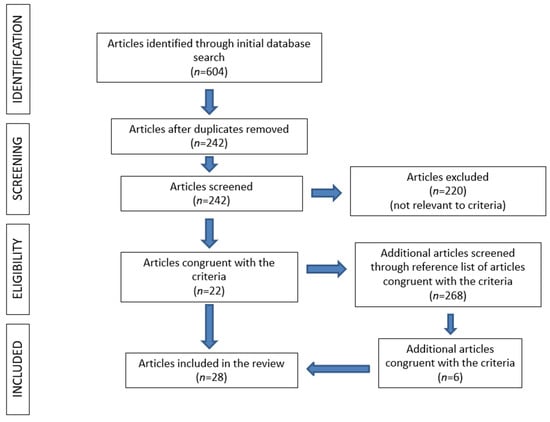
Figure 1
Open AccessArticle
Anatomical Study of the Lateral Tibial Spine as a Landmark for Weight Bearing Line Assessment during High Tibial Osteotomy
by
and
Medicina 2023, 59(9), 1571; https://doi.org/10.3390/medicina59091571 - 29 Aug 2023
Abstract
Background: Accurate pre-operative planning is essential for successful high tibial osteotomy (HTO). The lateral tibial spine is a commonly used anatomical landmark for weight-bearing line assessment. However, studies on the mediolateral (M-L) position of the lateral tibial spine on the tibial plateau and
[...] Read more.
Background: Accurate pre-operative planning is essential for successful high tibial osteotomy (HTO). The lateral tibial spine is a commonly used anatomical landmark for weight-bearing line assessment. However, studies on the mediolateral (M-L) position of the lateral tibial spine on the tibial plateau and its variability are limited. Purpose: This study aimed to (1) analyze the M-L position of the lateral tibial spine on the tibial plateau and its variability, (2) investigate radiologic parameters that affect the position of the lateral tibial spine, and (3) determine whether the lateral tibial spine can be a useful anatomical landmark for weight-bearing line assessment during HTO. Materials and Methods: Radiological evaluation was performed on 200 participants (64% female, mean age 42.3 ± 13.2 years) who had standing anterior–posterior plain knee radiographs with a patellar facing forward orientation. The distances from the medial border of the tibial plateau to the lateral spine peak (dLSP) and lateral spine inflection point (dLSI) were measured using a picture archiving and communication system. The medial–lateral inter-spine distance (dISP) was also measured. All parameters were presented as percentages of the entire tibial plateau width. The relationships between the parameters were also investigated. Results: The mean value of dLSP was 56.9 ± 2.5 (52.4–64.5)%, which was 5% lower than the Fujisawa point (62%). The mean value of dLSI was 67.9 ± 2.2 (63.4–75.8)%, which was approximately 5% higher than the Fujisawa point. The values of the dLSP and dLSI were variable among patients, and the upper and lower 10% groups showed significantly higher and lower dLSP and dLSI, respectively, than the middle 10% group. The mean value of dISP was 16.5 ± 2.4%, and it was positively correlated with dLSP and dLSI. Conclusions: On average, the dLSP and dLSI were located −5% and +5% laterally from the conventional Fujisawa point, and they may be useful landmarks for correction amount adjustment during HTO. However, it should be noted that correction based on the lateral tibial spine can be affected by anatomical variations, especially in patients with small or large inter-spine distances.
Full article
(This article belongs to the Special Issue Advances in Knee Surgery)
►▼
Show Figures
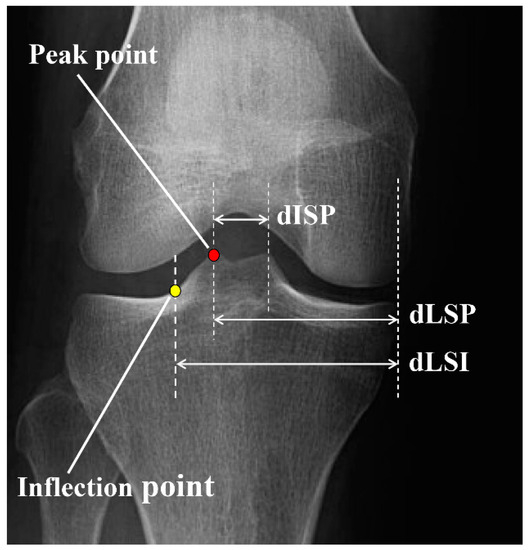
Figure 1
Open AccessReview
Evaluation of Ischemia with No Obstructive Coronary Arteries (INOCA) and Contemporary Applications of Cardiac Magnetic Resonance (CMR)
Medicina 2023, 59(9), 1570; https://doi.org/10.3390/medicina59091570 - 29 Aug 2023
Abstract
Ischemia with no obstructive coronary arteries (INOCA) is a relatively newly discovered ischemic phenotype that affects patients similarly to obstructive coronary artery disease (CAD) but has a unique pathophysiology and epidemiology. Patients with INOCA present with ischemic signs and symptoms but no obstructive
[...] Read more.
Ischemia with no obstructive coronary arteries (INOCA) is a relatively newly discovered ischemic phenotype that affects patients similarly to obstructive coronary artery disease (CAD) but has a unique pathophysiology and epidemiology. Patients with INOCA present with ischemic signs and symptoms but no obstructive CAD seen on coronary CTA or invasive coronary angiography, which can assess epicardial vessels. The mechanisms of INOCA can be grouped into three endotypes: coronary microvascular dysfunction, epicardial coronary vasospasm, or a combination of both. Accurate and comprehensive assessment of both epicardial and microvascular disease in suspected cases of INOCA is crucial for providing targeted therapy and improving outcomes in this underrepresented population. This review aims to clarify the complex pathophysiology of INOCA, present an overview of invasive and non-invasive diagnostic methods, and examine contemporary approaches for coronary perfusion assessment using cardiac magnetic resonance (CMR). We also explore how recent advancements in quantitative CMR can potentially revolutionize the evaluation of suspected INOCA by offering a rapid, accurate, and non-invasive diagnostic approach, thereby reducing the alarming number of cases that go undetected.
Full article
(This article belongs to the Special Issue Cardiac Magnetic Resonance)
►▼
Show Figures
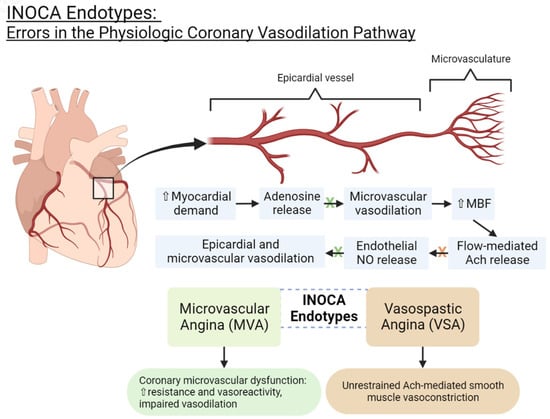
Figure 1
Open AccessArticle
Elucidation of the Mechanism of Occasional Anterior Longitudinal Ligament Rupture with Posterior Correction Procedure for Adult Spinal Deformity Using LLIF–Finite Element Analysis of the Impact of the Lordotic Angle of Intervertebral LLIF Cage
by
, , , , , , , , and
Medicina 2023, 59(9), 1569; https://doi.org/10.3390/medicina59091569 - 29 Aug 2023
Abstract
Background and Objectives: There are several advantages of using lateral lumbar interbody fusion (LLIF) for correction surgeries for adult spinal deformity (ASD); however, we currently have unresolved new issues, including occasional anterior longitudinal ligament (ALL) rupture during the posterior correction procedure. When LLIF
[...] Read more.
Background and Objectives: There are several advantages of using lateral lumbar interbody fusion (LLIF) for correction surgeries for adult spinal deformity (ASD); however, we currently have unresolved new issues, including occasional anterior longitudinal ligament (ALL) rupture during the posterior correction procedure. When LLIF was initially introduced, only less lordotic cages were available and ALL rupture was more frequently experienced compared with later periods when more lordotic cages were available. We performed finite element analysis (FEA) regarding the mechanism of ALL rupture during a posterior correction procedure. Methods: A spring (which mimics ALL) was introduced at the location of ALL in the FEA and an LLIF cage with two different lordotic angles, 6 and 12 degrees (6DC/12DC), was employed. To assess the extent of burden on the ALL, the extension length of the spring during the correction procedure was measured and the location of the rotation center was examined. Results: We observed a significantly higher degree of length extension of the spring during the correction procedure in the FEA model with 6DC compared with that of 12DC. We also observed that the location of the rotation center was shifted posteriorly in the FEA model with 6DC compared with that of 12DC. Conclusions: It is considered that the posterior and rostral edge of the less lordotic angle cage became a hinge, and the longer lever arm increased the burden on ALL as the principle of leverage. It is important to use an LLIF cage with a sufficient lordotic angle, that is compatible with the degree of posterior osteotomy in ASD correction.
Full article
(This article belongs to the Special Issue Evolution in Treatment and Diagnosis of Spine Disorders)
►▼
Show Figures
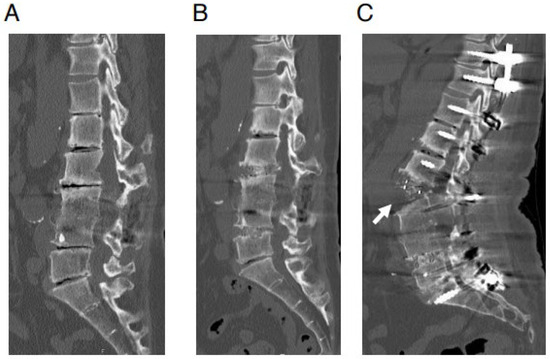
Figure 1
Open AccessArticle
Learning Curve Analysis of Robotic-Assisted Mitral Valve Repair with COVID-19 Exogenous Factor: A Single Center Experience
by
, , , , , , , , and
Medicina 2023, 59(9), 1568; https://doi.org/10.3390/medicina59091568 - 29 Aug 2023
Abstract
Background and objective Renewed interest in robot-assisted cardiac procedures has been demonstrated by several studies. However, concerns have been raised about the need for a long and complex learning curve. In addition, the COVID-19 pandemic in 2020 might have affected the learning curve
[...] Read more.
Background and objective Renewed interest in robot-assisted cardiac procedures has been demonstrated by several studies. However, concerns have been raised about the need for a long and complex learning curve. In addition, the COVID-19 pandemic in 2020 might have affected the learning curve of these procedures. In this study, we investigated the impact of COVID-19 on the learning curve of robotic-assisted mitral valve surgery (RAMVS). The aim was to understand whether or not the benefits of RAMVS are compromised by its learning curve. Materials and Methods Between May 2019 and March 2023, 149 patients underwent RAMVS using the Da Vinci® X Surgical System at the Humanitas Gavazzeni Hospital, Bergamo, Italy. The selection of patients enrolled in the study was not influenced by case complexity. Regression models were used to formalize the learning curves, where preoperative data along with date of surgery and presence of COVID-19 were treated as the input covariates, while intraoperative and postoperative data were analyzed as output variables. Results The age of patients was 59.1 ± 13.3 years, and 70.5% were male. In total, 38.2% of the patients were operated on during the COVID-19 pandemic. The statistical analysis showed the positive impact of the learning curve on the trend of postoperative parameters, progressively reducing times and other key indicators. Focusing on the COVID-19 pandemic, statistical analysis did not recognize an impact on postoperative outcomes, although it became clear that variables not directly related to the intervention, especially ICU hours, were strongly influenced by hospital logistics during COVID-19. Conclusions Understanding the learning curve of robotic surgical procedures is essential to ensure their effectiveness and benefits. The learning curve involves not only surgeons but also other health care providers, and establishing a stable team in the early stage, as in our case, is important to shorten the duration. In fact, an exogenous factor such as the COVID-19 pandemic did not affect the robotic program despite the fact that the pandemic occurred early in the program.
Full article
(This article belongs to the Special Issue New Advances in Mitral Valve Diseases Management)
►▼
Show Figures
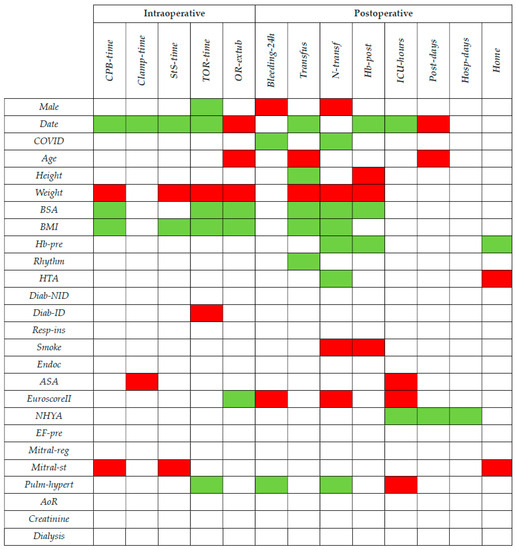
Figure 1
Open AccessReview
Anesthetic Management of Patients with Dilated Cardiomyopathy Undergoing Noncardiac Surgery
by
and
Medicina 2023, 59(9), 1567; https://doi.org/10.3390/medicina59091567 - 29 Aug 2023
Abstract
Dilated cardiomyopathy (DCM), a primary myocardial disease, is characterized by dilation of the left or both ventricles and systolic dysfunction with or without congestive heart failure. DCM per se is a well-recognized risk factor for sudden cardiac death and poor surgical outcomes following
[...] Read more.
Dilated cardiomyopathy (DCM), a primary myocardial disease, is characterized by dilation of the left or both ventricles and systolic dysfunction with or without congestive heart failure. DCM per se is a well-recognized risk factor for sudden cardiac death and poor surgical outcomes following noncardiac surgery. Surgical trauma/stress represents unique challenges for DCM patient management. Unfortunately, there is a big knowledge gap in managing DCM patients undergoing non-cardiac surgery. Therefore, the aim of our review is to provide basic facts and current advances in DCM, as well as a practical guideline to perioperative care providers, for the management of surgical patients with DCM, who are quite rare compared with the general surgical population. This review summarizes recent advances in the medical management of DCM as well as perioperative assessment and management strategies for DCM patients undergoing noncardiac surgery. Optimal surgical outcomes depend on multiple-disciplinary care to minimize perioperative cardiovascular disturbances.
Full article
(This article belongs to the Special Issue Recent Advances in Dilated Cardiomyopathy)

Journal Menu
► ▼ Journal Menu-
- Medicina Home
- Aims & Scope
- Editorial Board
- Reviewer Board
- Topical Advisory Panel
- Instructions for Authors
- Special Issues
- Topics
- Sections & Collections
- Article Processing Charge
- Indexing & Archiving
- Editor’s Choice Articles
- Most Cited & Viewed
- Journal Statistics
- Journal History
- Journal Awards
- Society Collaborations
- Editorial Office
Journal Browser
► ▼ Journal BrowserHighly Accessed Articles
Latest Books
E-Mail Alert
News
Topics
Topic in
Biomedicines, Brain Sciences, JCM, JVD, Medicina
Advances in Neurocritical Care
Topic Editors: Guoyi Gao, Guangzhi Shi, Zhixiong LiuDeadline: 31 October 2023
Topic in
Biomedicines, JCM, JPM, Medicina, Pharmaceutics, Molecules
New Compounds Discovery and Development in Medicine - Advances in Research on Potential Therapeutic Agents and Drug Candidates
Topic Editors: Anna Bogucka-Kocka, Przemysław Kołodziej, Monika Wujec, Roman Lesyk, Jacek BoguckiDeadline: 31 December 2023
Topic in
Diagnostics, JCDD, JCM, JPM, Medicina
Cardiovascular Disease in 2023: Coronary Syndrome, Heart Failure and Structural Heart Disease
Topic Editors: Saverio Muscoli, Rafael Vidal-PerezDeadline: 31 January 2024
Topic in
Diagnostics, JCM, Medicina, BioMed, Surgeries
Paradigm Shift in Spinal Diseases: From Diagnosis to Therapy
Topic Editors: Masato Tanaka, Chenkun LiawDeadline: 29 February 2024

Conferences
Special Issues
Special Issue in
Medicina
Pancreatic Physiology and Pathophysiology: Basic Science and Clinical Practice
Guest Editors: Zoltán Berger, Pap ÁkosDeadline: 1 September 2023
Special Issue in
Medicina
Advances in the Pathogenesis and Treatment of Inflammatory Immune Diseases
Guest Editor: Elaine Yee Lin ChungDeadline: 22 September 2023
Special Issue in
Medicina
Quantitative Hormone Monitoring of the Menstrual Cycle
Guest Editors: Thomas Paul Bouchard, Richard Jerome FehringDeadline: 30 September 2023
Special Issue in
Medicina
Trends and Developments in Hip and Knee Arthroplasty Technology
Guest Editors: Clemens Kösters, Sebastian Metzlaff, Ralf DieckmannDeadline: 20 October 2023
Topical Collections
Topical Collection in
Medicina
New Concepts for Dental Treatments and Evaluations
Collection Editors: Cosmin Sinescu, Virgil-Florin Duma
Topical Collection in
Medicina
Interventional Oncology
Collection Editors: François Cornelis, Matthias Barral, Adrian Kastler, Dimitrios Filippiadis
Topical Collection in
Medicina
Interdisciplinary Medicine – The Key For Personalized Medicine
Collection Editor: Camelia Diaconu
Topical Collection in
Medicina
A History of Burn Care
Collection Editors: Lars P. Kamolz, Bernd Hartmann




